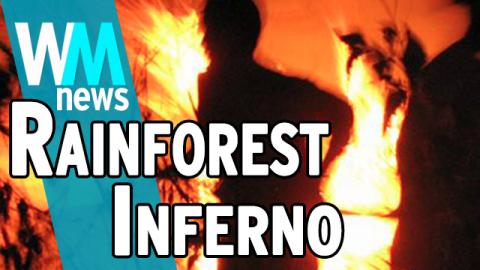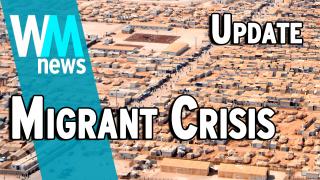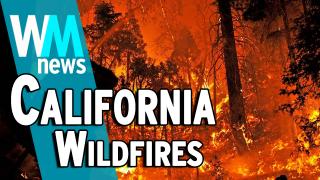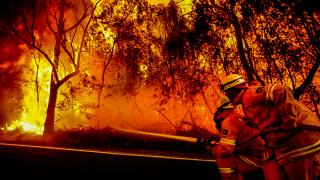10 Indonesia on Fire Facts - WMNews Ep. 52

If 'Hell on Earth' really does exist, then Indonesia experienced it in 2015. Welcome to WatchMojo News, the weekly series from http://www.WatchMojo.com where we break down news stories that might be on your radar. In this instalment, we're counting down 10 crucial facts you should know about the Indonesian Fire Crisis.
#10: What Is the Indonesian Fire Crisis? The Air Pollution
5 EU Migrant Crisis Update Facts - WMNews Ep. 44
Also known as the ‘Southeast Asian Haze’, the crisis is an annual fire and air pollution disaster. Affecting Indonesia in particular, the 2015 crisis is the worst recorded since 1997 – in part because of the ‘El Nino’ warm weather system. Inflicting unprecedented destruction onto unique natural environments, and the endangered species that live within them, the fires also pose a serious health risk to local human populations. In late October 2015, The Guardian journalist, George Monbiot, described the events as ‘almost certainly the greatest environmental disaster of the 21st century – so far.’
#9: Which Areas Have Been Affected? The Rainforest
10 California Wildfires Destruction Facts - WMNews Ep. 46
Indonesia serves as the epicenter of the crisis, as it is the country in which most of the fires are lit. The rainforest-rich island of Sumatra is especially affected, as is the Indonesian portion of the island of Borneo, Kalimantan. Furthermore, in early September 2015, the problems were labeled an international disaster, after the air quality in surrounding nations became affected. Malaysia, Singapore, Brunei, Vietnam, Cambodia, Thailand and the Philippines have all, to some extent, suffered amid the ‘haze’.
#8: How Did They Start? The Deforestation
10 Reddit Facts - WMNews Ep. 37
Probably the most shocking element of the fires is that they are not naturally occurring; they’re almost entirely man-made. Huge areas of forest and farmland are being purposefully set alight as part of an industry tactic known as ‘slash and burn’, which rids land of last season’s crop and makes way for the new plants of next year. Palm oil is a hugely important product for the Indonesian economy, with the country ranking as the world’s number one palm oil producer. In the majority of cases, however, the fire crisis originates from oil palm plantations; and the hellish scenes can be attributed to them.
#7: Why Are They Starting the Fires? The Companies
Top 10 Most Devastating Fires in History
As with many instances of inhumanity, money fuels the Indonesian firestorm. On a basic level, it’s cheaper for palm oil companies to burn new space into existence, regardless of the social and environmental impact of their actions. There is government legislation in place against the practice, but the legally authorized methods of ridding land of unwanted, unused crops are too expensive, and time-consuming. Palm oil is present within almost half of all packaged supermarket products, so for oil producers, the demand is great enough to warrant the destruction. Public campaigns and protests against the industry are ongoing, but evidence suggests that it shows no sign of stopping.
#6: How Has the Government Reacted? The State of Emergency
10 Vladimir Putin Government Facts - WMNews Ep. 20
On September 4th, 2015, it was confirmed that six Indonesian provinces – Riau, Jambi, South Sumatra, and South, West and Central Kalimantan – had declared a ‘state of emergency’. On September 14th, the central Indonesian government confirmed a second ‘state of emergency’ for Riau. However, the government has been heavily criticized for how it has subsequently handled the fires, with some Riau residents even writing to Malaysian authorities, seeking aid in the absence of help from their own government. In general, Indonesia has been slow to accept foreign aid, although, as of early October 2015, the government has allowed some international assistance.
#5: What Is the State of Indonesia’s Government? The Corruption
10 2015 FIFA Corruption Scandal Facts - WMNews Ep. 30
In relation to the fire crisis, allegations of corruption are being leveled at the Indonesian government. The problems may not go to the very top, but it’s believed that local governments are almost certainly linked to the ongoing occurrence of what is an illegal practice. Private companies are paying bribe money to skirt the rules, in what some commentators call a ‘Mafioso-type’ set-up. These companies are then headed into areas that should technically be ‘protected’, and burning them off to make room for more farmland. Critics also point toward the hesitation to allow foreign aid as an attempt to cover up corruption in Indonesian provincial politics.
#4: How Have These Fires Affected the Population? The Evacuation
10 USA Gun Rights Debate Facts - WMNews Ep. 33
As of November 2015, there were estimates as high as around half a million people who were suffering some form of respiratory illness as a result of the fires, and the harmful gasses they emit. In the worst affected areas, the air was sepia-toned, with Pollutant Standard Index levels measuring at 2000, where anything above 300 is considered dangerous to humans. Skin and eye problems also rose significantly, and in the worst hit areas at least nineteen people had died from haze-related illness by early November 2015. Schools were closed in Singapore and Malaysia, as well as Indonesia, and various outdoor events were called off. Indonesian warships were also on hand to evacuate when necessary, as the situation seemed to get worse by the week.
#3: What Does This Mean for the Endangered Animals? The Deaths
An especially worrying aspect of the fires is that many endangered species are at best being displaced, at worst being killed. One third of the world’s remaining orangutans are under threat, while environmentalists also fear for the Sumatran Tiger, the Sumatran Rhinoceros, the Sun Bear, and the Borneo Pygmy Elephant; the list of protected species that could perish is a long one. Borneo is especially famed for its diverse natural habitats, which are home to the world’s rarest animals. But, Indonesia is the fastest forest-clearing nation on Earth. Its reputation for conservation is going up in flames as well.
#2: How Does This Affect the Rest of the World? The Emissions
Highest estimates claim the Indonesian Fire Crisis is producing more daily emissions than the entire US. In November 2015, Pep Canadell, the Head of the Global Carbon Project at the Commonwealth Scientific and Industrial Research Organization, said that atmospheric carbon dioxide levels may have exceeded 400 parts per million in some areas – which is the highest concentration for 2 million years. The areas that are being burned are extremely rich in carbon, meaning that these fires could be up to 200 times more damaging than others of their type. In total, around 1 billion tons of carbon has been released amid the disaster, potentially fast-forwarding us two years closer to runaway climate change.
#1: What Is Being Done to Control the Fires? The Future
With mounting pressure from the international community to reign in its emissions, Indonesia is politically obliged to tackle the fires. But, it must do so for its own economy as well. Despite the ‘slash and burn’ tactics being born out of financial frugality, the disaster has spiraled out of control and cost the nation over $30 billion. The Indonesian military is now deployed in an effort to end the crisis, and foreign aid from the likes of Australia, Japan and Singapore is now being accepted. These fires will eventually be beaten, but the corruption that caused them will probably continue; leaving critics to lament the likelihood that a similar situation will happen again. Did these facts get you thinking? To vote for which news story is covered next head over to WatchMojo.com/suggest, and be sure to hit that subscribe button for more newsworthy top tens published every week!








